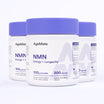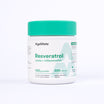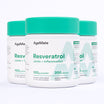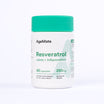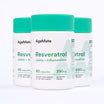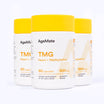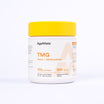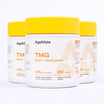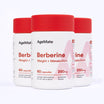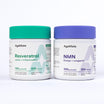Key Takeaways:
- NR and NRHM boost NAD+ levels, aiding energy production, DNA repair, and cellular communication to combat aging.
- Combining NR with Hydrogen Malate to form NRHM enhances the stability and absorption of NR.
- Studies show NR increases NAD+ levels, improves muscle health, reduces inflammation, and may enhance cognitive function and physical performance.
__________________________________
In the realm of health and wellness, new discoveries continuously reshape our understanding of how the body functions and how we can optimize it. One such discovery is Nicotinamide Riboside (NR), a compound garnering significant attention for its potential benefits in cellular health and longevity. Keep reading to delve into what NR is, how it works, and discover the additional benefits of Nicotinamide Riboside Hydrogen Malate (NRHM).
What is NR?
NR, a precursor to Nicotinamide Adenine Dinucleotide (NAD+), acts like a key that unlocks the door to cellular energy and vitality. NR is a derivative of vitamin B3, or niacin, and serves as a precursor to NAD+, a crucial coenzyme in all living cells.
NAD+ is essential for energy metabolism and maintaining proper cell function. As we age, NAD+ levels decline, contributing to various age-related diseases and conditions. Supplementing with NR aims to replenish NAD+ levels, potentially mitigating some adverse effects associated with aging (R).
What is NRHM?
Nicotinamide Riboside Hydrogen Malate (NRHM) is a formulation that includes NR combined with Hydrogen Malate. While NR is the primary active ingredient, Hydrogen Malate is added to potentially enhance the stability, absorption, or overall effectiveness of NR. NRHM aims to deliver the benefits of NR more effectively by leveraging the properties of both compounds (R).
The Mechanisms Behind NR
NR works by enhancing the body’s ability to produce NAD+. Upon ingestion, NR is converted into Nicotinamide Mononucleotide (NMN) and then to NAD+ through a series of enzymatic reactions. By boosting NAD+ levels, NR supports several cellular processes (R):
Energy Production: NAD+ is essential for mitochondrial function, where it facilitates the conversion of nutrients into ATP, the cell’s energy currency.
DNA Repair: NAD+ activates enzymes involved in DNA repair, such as PARPs (Poly ADP-ribose polymerases), which help maintain genomic stability.
Cellular Communication: NAD+ is crucial for the activity of sirtuins, a family of proteins that regulate cellular health, aging, and inflammation.
Human Trials and Scientific Research
The scientific community has been actively investigating the effects of NR through various human trials. Here are some notable studies:
1. Bioavailability and NAD+ Levels:
Oral NR and NMN significantly boosts blood NAD+ levels, up to 2.7-fold with a single dose, demonstrating superior pharmacokinetics compared to other NAD+ precursors (R).
2. Body Composition and Metabolism:
NR supplementation in obese individuals increased skeletal muscle NAD+ metabolites and induced minor body composition changes, but did not significantly impact insulin sensitivity or other metabolic health markers (R).
3. Skeletal Muscle and Anti-inflammatory Effects:
NR supplementation in aged individuals increased muscle NAD+ levels and reduced inflammation, without altering mitochondrial bioenergetics (R).
4. Pharmacokinetics and NAD+ Levels:
NR increases blood NAD+ levels significantly and is well-tolerated, supporting its potential use for mitochondrial dysfunction treatments (R).
5. Exercise Performance in Older Individuals:
NR supplementation in older adults improved NADH levels, reduced oxidative stress, and enhanced physical performance, indicating benefits for those with antioxidant deficiencies (R).
6. Cognitive Impairment:
Preliminary findings suggest NR supplementation may improve cognitive function and synaptic plasticity in older adults with mild cognitive impairment (R).
7. Ataxia Telangiectasia:
Long-term NR supplementation improved motor coordination and eye movements in patients with Ataxia Telangiectasia, suggesting potential benefits for managing symptoms (R).
8. Therapeutic Potential of NMN and NR:
Both NMN and NR have shown preventive and therapeutic effects in ameliorating age-associated pathophysiologies and disease conditions (R).
These human trials provide compelling evidence supporting NR’s role in promoting cellular health and longevity.
Conclusion
NR and NRHM represent a fascinating advancement in the field of health and longevity. By understanding their mechanisms and reviewing the latest human trials, we can appreciate their potential benefits in enhancing cellular function and mitigating the effects of aging. As research continues, NR, NRHM and NMN will become pivotal components of strategies aimed at improving health and extending lifespan.
Explore AgeMate’s NMN and the impact it can have on your health, well-being and longevity.



